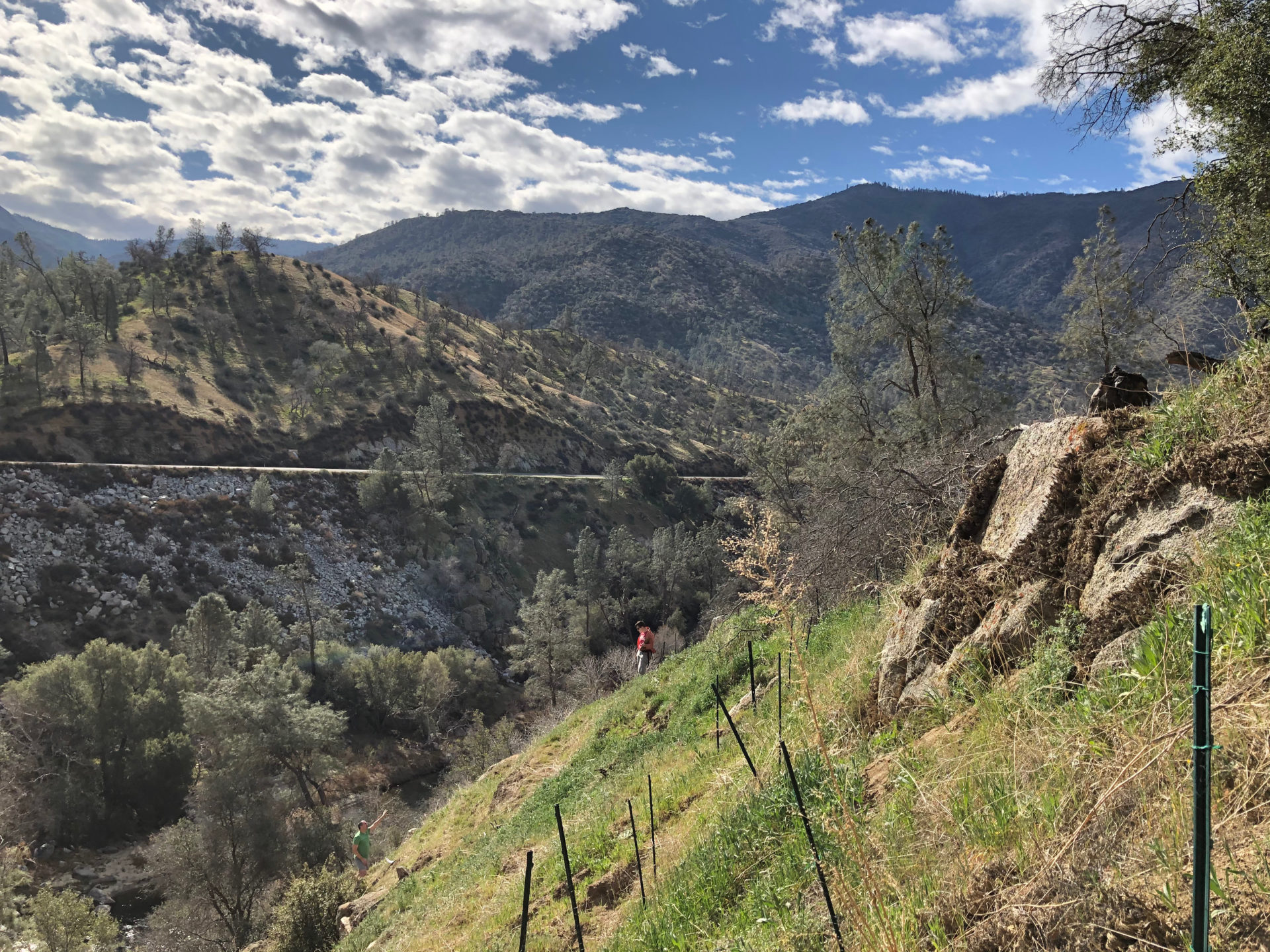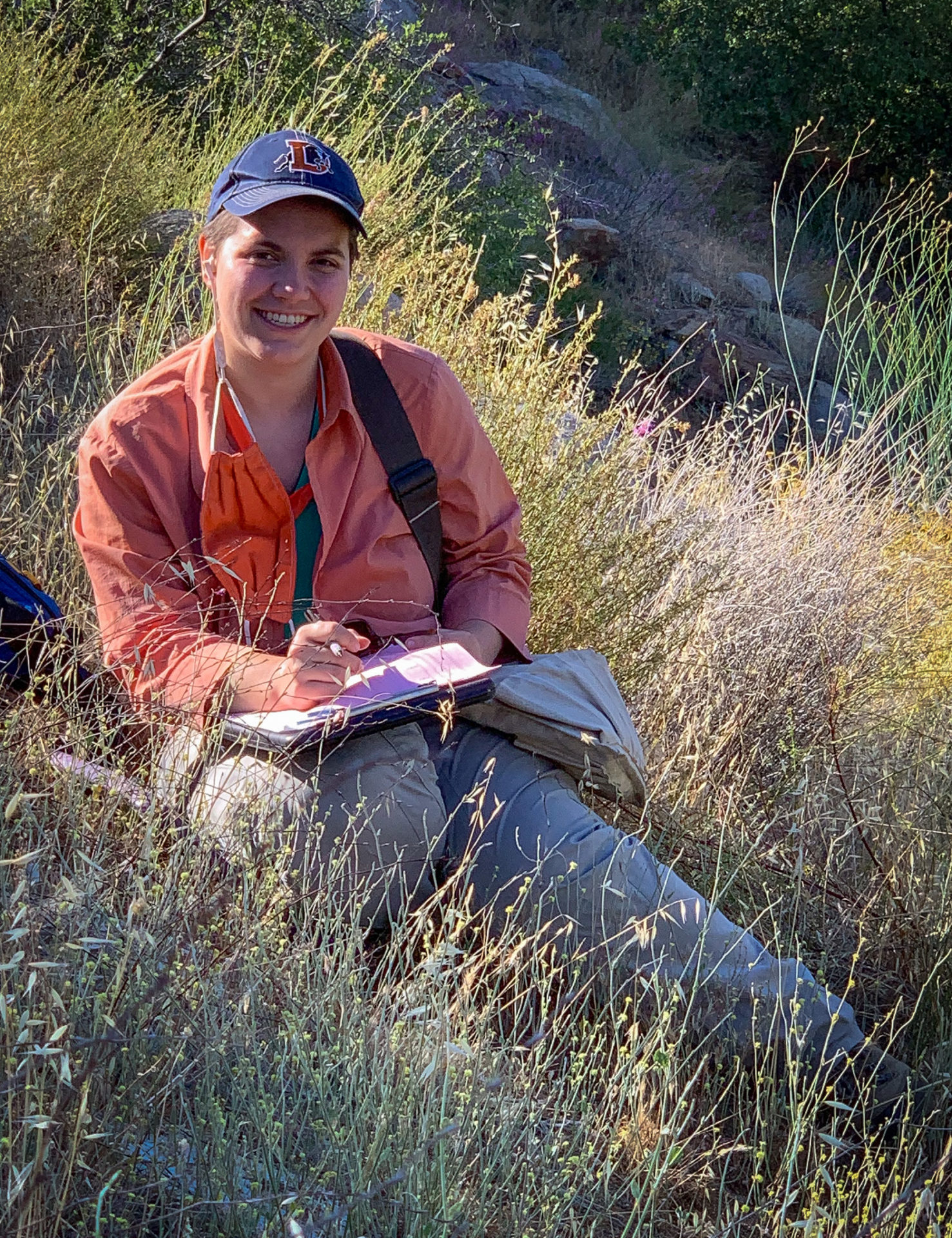
Taz Mueller
Research Q & A
What’s your hometown?
Boulder, Colorado.
What are you currently working on?
The Bell Museum graduate student award through the Dayton Fund allowed me to establish a reciprocal transplant experiment of Clarkia xantiana ssp xantiana, a narrowly endemic annual wildflower native to the southern Sierra Nevada foothills, in order to study their fungal leaf communities. I am specifically studying the factors that drive the assembly of foliar fungal endophyte communities, which are diverse, non-pathogenic fungal microbes living in plant leaves that can have a variety of effects on their hosts. The goal of this experiment was to disentangle the influence of host plant genotype and environment on a host plant’s leaf microbiome communities.
How are you working towards that goal?
After collecting seeds from the field in 2019, this year I was able to plant over 7,000 seeds in transplants across its range. Once the plants had matured, I was able to collect leaf samples from the experimental plants and I am now processing them in the lab for DNA extraction and high-throughput amplicon sequencing of the foliar endophyte communities inside them.
Why are you focusing your work in that area?
I am interested in how ecological and evolutionary forces shape plant-microbial interactions, and how those interactions vary across space and time. There is very little experimental fieldwork that has quantified the effects of factors other than distance in the assembly of fungal endophyte communities in plants. I aim to clarify how host variation—through local adaptation, genetic structure and phenotypic plasticity—interacts with abiotic environmental conditions to structure how microbial communities assemble themselves within their leaf tissue. My work will provide a key empirical foundation for understanding the relative influence of host genetic and environmental effects on microbial community assembly, in a naturalistic field context. A solid foundation in the eco-evolutionary mechanisms of microbial community assembly is a prerequisite to a great deal of experimental and applied work involving relationships of plants and microbes, and these experiments will lay fundamental empirical groundwork informing future research on plant host-associated microbial communities, such as predicting how plants’ responses to climate change may be mediated by their microbial communities.
Where are you working on research/field work?
My field sites span an 80 km area within the Kern Canyon in Kern County and Tulare County, in the southern Sierra Nevada foothills of California. My bench work is being conducted on the UMN Twin Cities campus in St. Paul in the lab of my advisor, Dr. David Moeller, in the Department of Plant and Microbial Biology. I am also working with the UMN Genomics Center to use high-throughput Illumina amplicon sequencing to characterize the microbial communities in my samples.
What will your next steps/research be?
After processing my samples, I will be moving forward to another experiment, this time a common garden experiment. I will be planting recombinant inbred lines of Clarkia xantiana ssp. Parviflora, a selfing subspecies of C. xantiana , and manipulating them with treatment blocks in the field. This experiment is aimed at untangling the influence of host phenotypic plasticity on communities while controlling for genetic and environmental variation.




